Inside the New York City Factory:
the Making of a Steinway
A subway ride to Queens on the M or R lines will arrive at Steinway Street, a sure sign that the neighborhood you’re entering is inexorably linked to Steinway & Sons, makers of the finest pianos in the world. This area of New York was once known as “Steinway Village,” a community formed at the end of the 19th century, when Steinway moved its small Manhattan factory to Astoria and began to drive surrounding economic development.
At the northern end of this village is the historic Steinway factory. Each piano built here has been carefully crafted for at least 9 months, and eighty percent of the production process is completed by hand by meticulously trained Steinway craftsmen. A tour of the factory reveals the time-honored processes that have made the name of Steinway an iconic part of American musical history since 1853.
Wood & Rim
Adjacent to the Steinway factory is an open area where the first step in the manufacture of each Steinway piano takes place: the selection of wood.
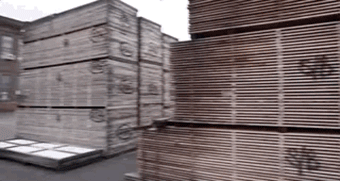
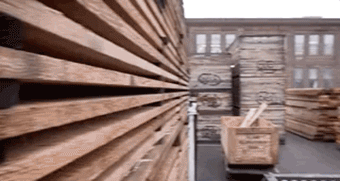
Steinway chooses only the best quality wood for its grand and upright pianos. When the wood arrives at the Steinway factory, it is dried for more than two years. This process allows water to evaporate naturally to achieve the wood’s best acoustic quality. If the drying speed is too fast, the structure and durability of the wood will be negatively affected. For over 160 years, Steinway’s high standards for drying wood have never changed.
After careful selection and preparation of the wood, the production of a Steinway can really begin: bending the rim.
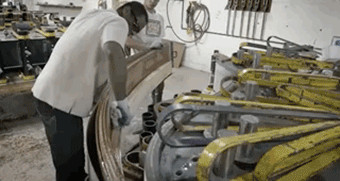
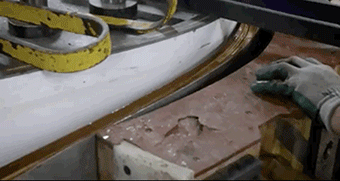
The rim forms the iconic curved shape of a grand piano which was patented by C. F. Theodore Steinway in 1880. Strength is obtained by bending up to seventeen laminates of hard maple and a mahogany veneer in an unbroken curve from base to treble. The curvature distributes vibrations uniformly through its entire length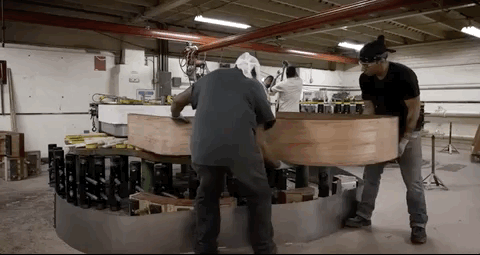 The molded case will be dried again for several months to ensure its shape and texture. After the shell is finalized, the craftsmen will transport it to the cutting shop, and any excess corners will be trimmed to allow for finishing.
The molded case will be dried again for several months to ensure its shape and texture. After the shell is finalized, the craftsmen will transport it to the cutting shop, and any excess corners will be trimmed to allow for finishing.
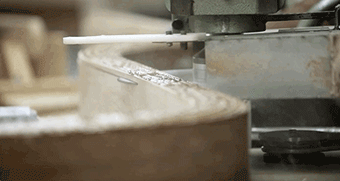
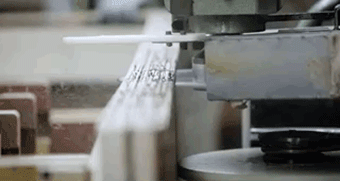
Belly & Bridge
The fourth floor of the Steinway factory is called the “Belly Department,” due to the correlation between pianos and violins. Like a violin, the piano string contacts a bridge which transfers energy to the soundboard below it. The areas of the bridge that would otherwise interfere with the free vibrations of the string must be removed. This process is called “notching the bridge.”
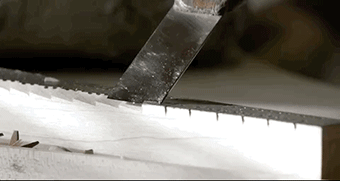
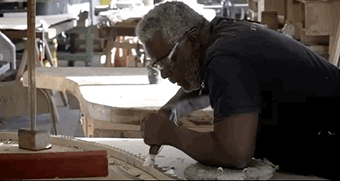
Steinway craftsmen manually nail hundreds of parallel coded pins to every bridge to guide the strings, ensuring perfect transmission of sound to soundboard.
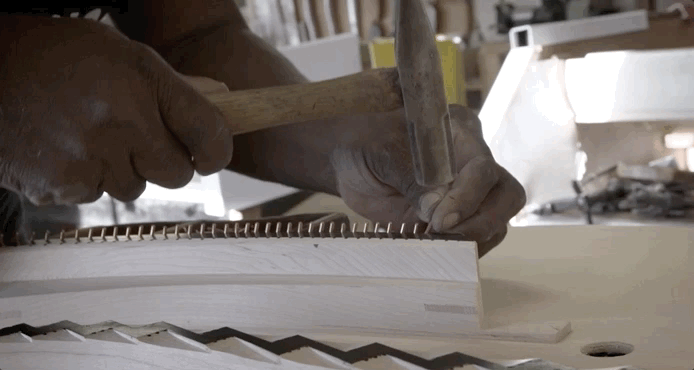 A Steinway carries up to 40,000 pounds of tension from its strings constructed from the highest quality elastic steel wire. The craftsmen first fix the bolts and strings to the action mechanism, and then manually apply tension to the strings with a tuning wrench.
A Steinway carries up to 40,000 pounds of tension from its strings constructed from the highest quality elastic steel wire. The craftsmen first fix the bolts and strings to the action mechanism, and then manually apply tension to the strings with a tuning wrench.
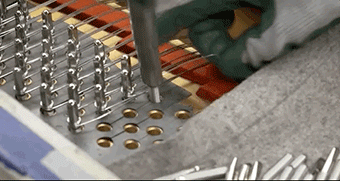
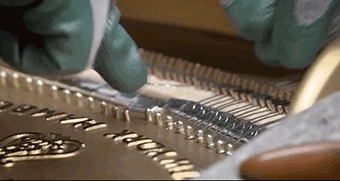
Keys & Action
Steinway technicians use a small square with a pre-set weight to precisely check the weight and balance of each key. This process guarantees that each key will return to its original position immediately after being activated.
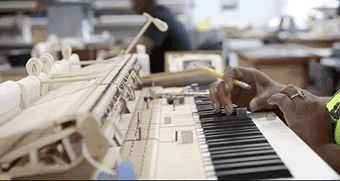
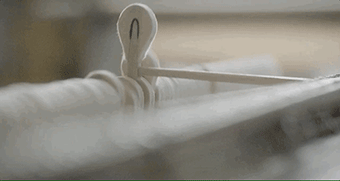
Piano sounds are emitted when hammers strike keys. The strings in the low range are heavier, and the weight of the corresponding action is also heavier. Therefore, if there is no corresponding counterweight or balance detection, the pianist’s playing experience will be compromised. The careful and repeated debugging by Steinway technicians working in the balance detection department ensures that this problem never occurs in a finished Steinway.
 When triggered, the action must be struck vertically to the strings to ensure fullness and brilliance of sound. Steinway technicians carefully use the temperature of an open flame to soften the hammershanks on the action mechanism. They will continue to fine-tune the mechanism until the action is able to hit the keys vertically, ensuring accuracy of the angle and durability of maintenance.
When triggered, the action must be struck vertically to the strings to ensure fullness and brilliance of sound. Steinway technicians carefully use the temperature of an open flame to soften the hammershanks on the action mechanism. They will continue to fine-tune the mechanism until the action is able to hit the keys vertically, ensuring accuracy of the angle and durability of maintenance.
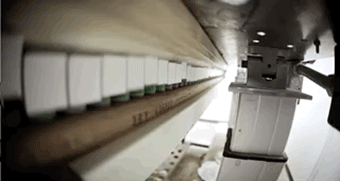
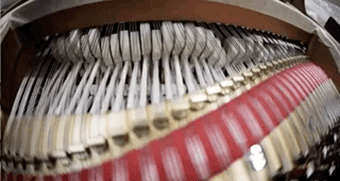
Once a Steinway is assembled, it is also necessary to fully integrate the keys with the entire piano and to repeatedly test the stability of the keys. To achieve this, the piano is sent to “The Pounding Room,” where each key will be played up to 3,200 times. The piano will then undergo multiple adjustments and fine tunings until it has reached perfection.
Finish
Every Steinway is built from the inside out, and of course the last step, the case and finishing, are as meticulous as each step that has come before. Each piano requires six coats of paint to ensure sufficient thickness for further sanding and polishing. The interval between paintings is accurately calculated. After the painting is completed, the case is left to stand for one week, and then the paint is hardened before further modification.
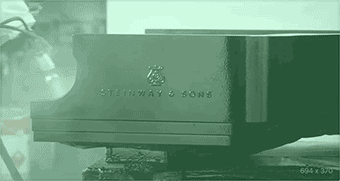
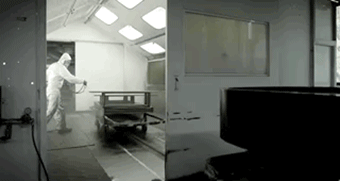
The culture of the Steinway factory is not a race against time. Steinway is committed not to efficient mass production for higher profits, but to a slow and steady pace in the pursuit of highest quality.
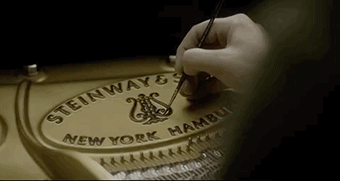
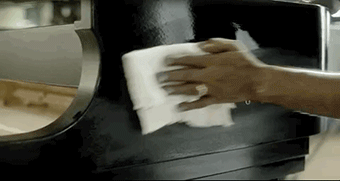
Craftsmanship and ingenuity guarantee that—as has been the case for 170 years—Steinways are simply the best pianos in the world.